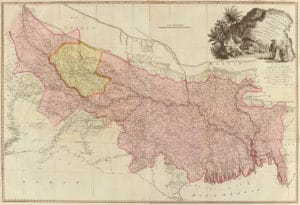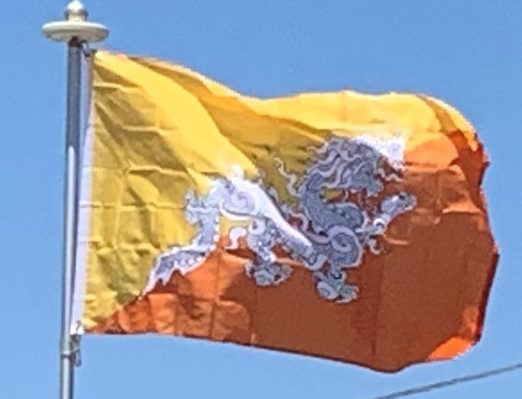Until the early 17th century, Bhutan existed as a patchwork of minor warring fiefdoms, when the area was unified by the Tibetan lama and military leader Ngawang Namgyal, who had fled religious persecution in Tibet. To defend the country against intermittent Tibetan forays, Namgyal built a network of impregnable dzongs or fortresses, and promulgated the Tsa Yig, a code of law that helped to bring local lords under centralized control. Many such dzong still exist and are active centers of religion and district administration.
European Contact:
Portuguese Jesuits Estêvão Cacella and João Cabral were the first recorded Europeans to visit Bhutan in 1627, on their way to Tibet. They met Zhabdrung Ngawang Namgyal, presented him with firearms, gunpowder and a telescope, and offered him their services in the war against Tibet, but the Zhabdrung declined the offer. After a stay of nearly eight months Cacella wrote a long letter from the Chagri Monastery reporting on his travels. This is a rare extant report of the Zhabdrung.
When Ngawang Namgyal died in 1651, his passing was kept secret for 54 years[1651-1705]. After a period of consolidation, Bhutan lapsed into internal conflict. In the year 1711 Bhutan went to war against the Mughal Empire and its Subedars, who restored the kingdom of Koch Bihar in the south. During the chaos that followed, the Tibetans unsuccessfully attacked Bhutan in 1714.

In the 18th century, the Bhutanese invaded and occupied the kingdom of Koch Bihar. In 1772, the Maharaja of Koch Bihar appealed to the British East India Company which assisted by ousting the Bhutanese and later in attacking Bhutan itself in 1774. A peace treaty was signed in which Bhutan agreed to retreat to its pre-1730 borders. However, the peace was tenuous, and border skirmishes with the British were to continue for the next hundred years. The skirmishes eventually led to the Duar War (1864–65), a confrontation for control of the Bengal Duars. After Bhutan lost the war, the Treaty of Sinchula was signed between British India and Bhutan. As part of the war reparations, the Duars were ceded to the United Kingdom in exchange for a rent of Rs. 50,000. The treaty ended all hostilities between British India and Bhutan.
During the 1870s, power struggles between the rival valleys of Paro and Tongsa led to civil war in Bhutan, eventually leading to the ascendancy of Ugyen Wangchuck, the poenlop (governor) of Tongsa. From his power base in central Bhutan, Ugyen Wangchuck defeated his political enemies and united the country following several civil wars and rebellions during 1882–85.
20th Century:
In 1907, an epochal year for the country, Ugyen Wangchuck was unanimously chosen as the hereditary king of the country by the Lhengye Tshog of leading Buddhist monks, government officials, and heads of important families, with the firm petition made by Gongzim Ugyen Dorji. John Claude White, British Political Agent in Bhutan, took photographs of the ceremony. The British government promptly recognized the new monarchy, and in 1910 Bhutan signed the Treaty of Punakha, a subsidiary alliance which gave the British control of Bhutan’s foreign affairs and meant that Bhutan was treated as an Indian princely state. This had little real effect, given Bhutan’s historical reticence, and also did not appear to affect Bhutan’s traditional relations with Tibet. After the new Union of India gained independence from the United Kingdom on 15 August 1947, Bhutan became one of the first countries to recognize India’s independence. On 8 August 1949, a treaty similar to that of 1910, in which Britain had gained power over Bhutan’s foreign relations, was signed with the newly independent India.
